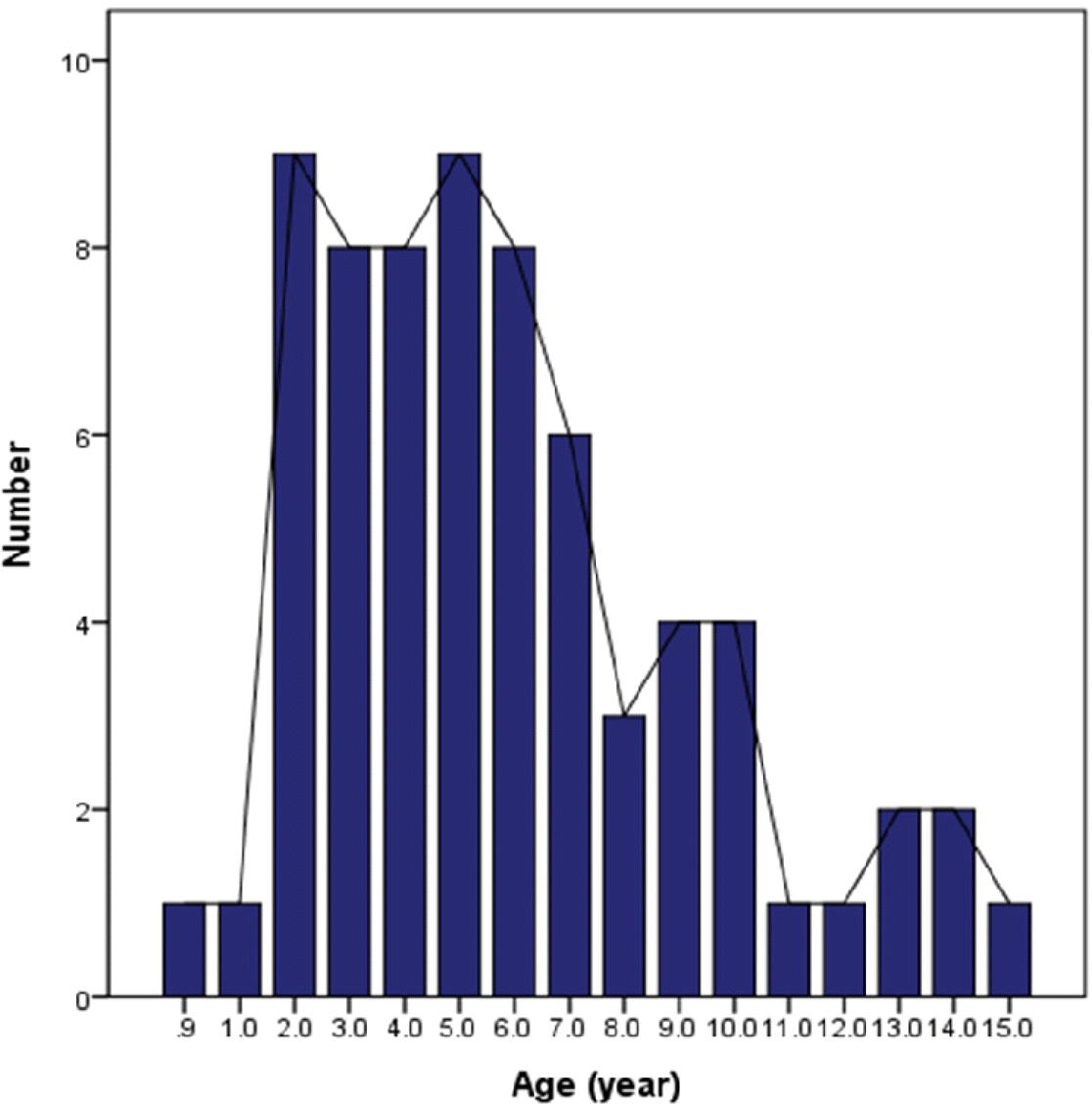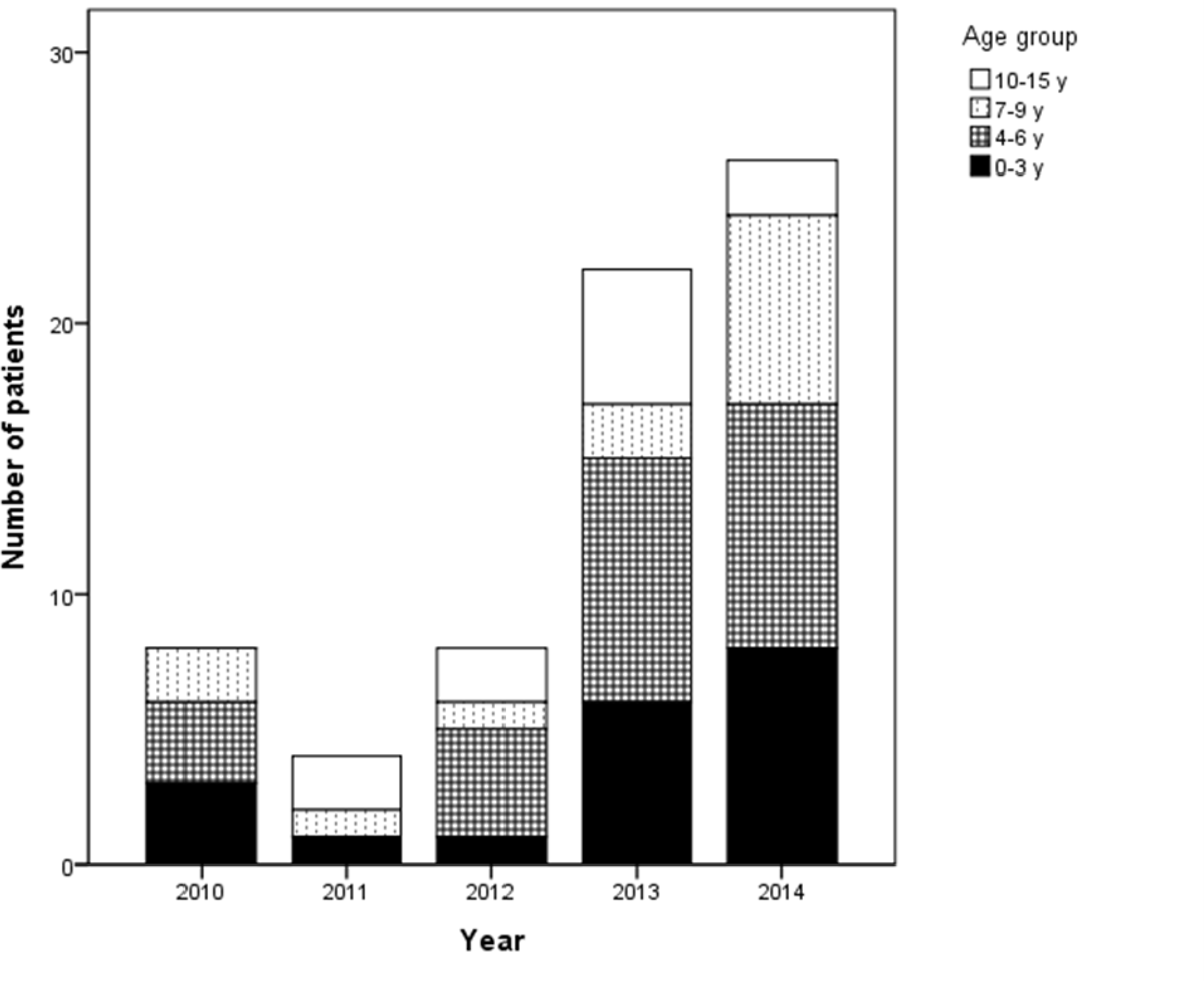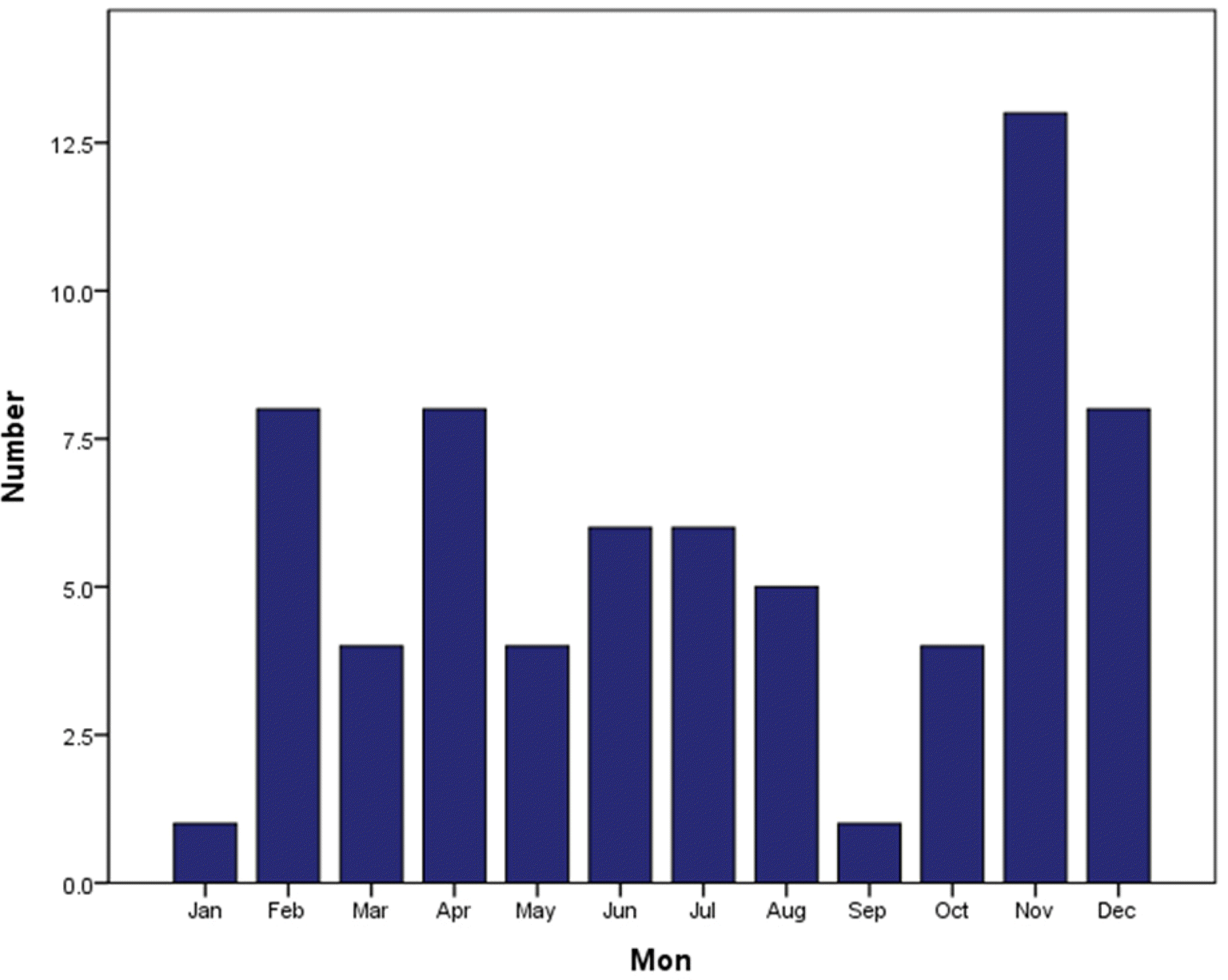Abstract
Objectives
Few studies of pediatric Epstein-Barr virus (EBV)-associated infectious mononucleosis (IM) have been conducted in Korea. We evaluated the clinical features of children with IM to define differences according to age.
Methods
We conducted retrospective chart reviews of 68 children aged 0 to 15 years who were diagnosed by EBV-associated IM with EBV-Viral Capsid Antigen(VCA) IgM at laboratory test and were admitted between 2010 and 2014. The children were classified into four age groups: aged 0–3, 4–6, 7–9, and 10–15 years.
Results
The age distribution of patients was as follows: 19 (27.9%) 0–3, 25 (36.8%) 4–6, 13 (19.1%) 7–9, and 11 (16.2%) 10–15. Fever was the most common presentation regardless of age. It was more common in the 0–3 group than the 4–6 group (P = 0.018). Pharyngitis was more common in the 7–9 group than the 0–3 group (P = 0.048), and myalgia was more common in the 10–15 group than the 0–3 group (P = 0.007). Pharyngitis was accompanied by lymphadenopathy, protracted fever, and rash. In the 0–3 age group, the prevalence of rash was higher while the percentage of atypical lymphocytes was lower, but there was no statistical support for this tendency. There were no differences in the frequency of hepatosplenomegaly or laboratory findings between age groups.
Go to : 
REFERENCES
1.Higgins CD., Swerdlow AJ., Macsween KF., Harrison N., Williams H., McAulay K, et al. A study of risk factors for acquisition of Epstein-Barr virus and its subtypes. J Infect Dis. 2007. 195:474–82.

3.Bolis V., Karadedos C., Chiotis I., Chaliasos N., Tsabouri S. Atypical manifestations of Epstein-Barr virus in children: a diagnostic challenge. J Pediatr (Rio J). 2016. 92:113–21.

4.Murata T., Sato Y., Kimura H. Modes of infection and oncogenesis by the Epstein-Barr virus. Rev Med Virol. 2014. 24:242–53.

5.Moon WY., Oh SH., Ko TS., Park YS., Moon HN., Hong CY, et al. Infectious mononucleosis in children. J Korean Pediatr Soc. 1994. 37:822–31.
6.Choi JS., Kim TH., Park HY., Lim SC. Clinical analysis of infectious mononucleosis. Korean J Otolaryngol-Head Neck Surg. 1997. 40:914–21.
7.Oh SH., Lee YA., Moon WY., Ko TS., Park YS., Moon HN, et al. Prevalence of Epstein-Barr virus (EBV) antibody in Korean children. J Korean Pediatr Soc. 1994. 37:804–11.
8.Son KH., Shin MY. Clinical features of Epstein-Barr virus-associated infectious mononucleosis in hospitalized Korean children. Korean J Pediatr. 2011. 54:409–13.

9.González Saldaña N., Monroy Colín VA., Piña Ruiz G., Juárez Olguín H. Clinical and laboratory characteristics of infectious mononucleosis by Epstein-Barr virus in Mexican children. BMC Res Notes. 2012. 5:361.

10.Topp SK., Rosenfeldt V., Vestergaard H., Christiansen CB., Von Linstow ML. Clinical characteristics and laboratory findings in Danish children hospitalized with primary Epstein-Barr virus infection. Infect Dis (Lond). 2015. 47:908–14.

11.Wang Y., Li J., Ren YY., Zhao H. The levels of liver enzymes and atypical lymphocytes are higher in youth patients with infectious mononucleosis than in preschool children. Clin Mol Heptol. 2013. 19:382–8.

12.Xiong G., Zhang B., Huang MY., Zhou H., Chen LZ., Feng QS, et al. Epstein-Barr virus (EBV) in-fection in Chinese children: a retrospective study of age-specific prevalence. PLoS One. 2014. 9:e99857.

13.Dowd JB., Palermo T., Brite J., McDade TW., Aiello A. Seroprevalence of Epstein-Barr virus infection in U.S. children ages 6-19, 2003-2010. PLoS One. 2013. 8:e64921.

14.Gao LW., Xie ZD., Liu YY., Wang Y., Shen KL. Epidemiologic and clinical characteristics of infectious mononucleosis associated with Epstein-Barr virus infection in children in Beijing, China. World J Pediatr. 2011. 7:45–9.

15.Odame J., Robinson J., Khodai-Booran N., Yeung S., Mazzulli T., Stephens D, et al. Correlates of illness severity in infectious mononucleosis. Can J Infect Dis Med Microbiol. 2014. 25:277–80.

16.Ventura KC., Hudnall SD. Hematologic differences in heterophile-positive and heterophile- negative infectious mononucleosis. Am J Hematol. 2004. 76:315–8.
Go to : 
 | Fig. 1.Age distributions of 68 pediatric patients with infectious mononucleosis caused by Epstein-Barr virus infection |
Table 1.
Age and Sex Distribution
Table 2.
Frequency of signs and symptoms associated with infectious mononucleosis according to age group
Table 3.
Laboratory findings by patient age group
Table 4.
Frequency of abnormal laboratory findings among 68 pediatric patients with Epstein-Barr virus-associated infectious mononucleosis




 PDF
PDF ePub
ePub Citation
Citation Print
Print




 XML Download
XML Download